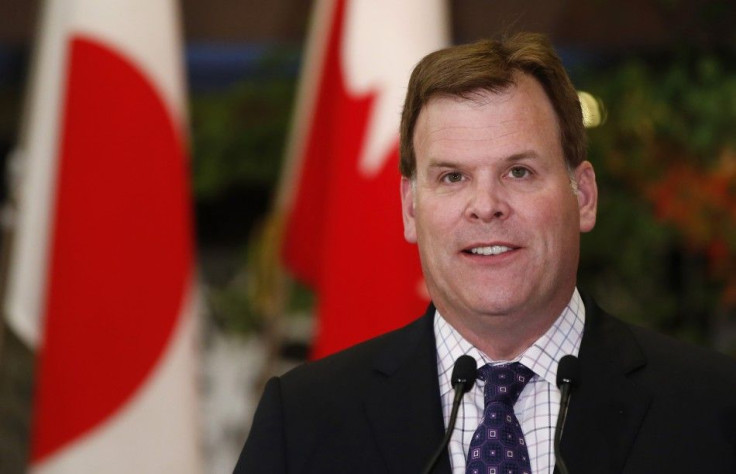Canada Blames External Factors For Its Economic Woes: Hints At Feel Good Budget

Canada's Finance Minister Joe Oliver has dismissed the challenges faced by the Canadian economy as short term and contributed by factors such as the fragile global recovery and geo-political risks in some parts of the world and affected growth of employment and exports.
Nevertheless, Canada will be trying to induce a feel good factor in the economy by reducing the tax burden in the upcoming budget, next year. The thinking is that a tax-free budget will spell good for the conservatives politically too, as the federal election is slated for next year.
Trade Growth Hampered
According to a Cbc. Ca report, Joe Oliver reasoned that two large economies in the world -- United States and China are in a slow down. They struggled recently and the geo-political concerns in the Middle East and Eastern Europe are also threatening global trade at a time Canada was looking to grow its exports.
However, the immediate goal will be bringing federal budget back to a surplus at about $6.4-billion.
Wakefield Meetings
The finance minister held a two-day summer policy retreat at the Wakefield Inn to the north of Ottawa. It is an annual gathering, attended by more than a dozen private-sector economists and business leaders.
The Finance Minister and executives from Costco, Hydro-Québec and Rio Tinto met business leaders and discussed the obstacles facing the economic growth and shared the minister's outlook on that. Oliver became the finance minister early this year and succeeded late Jim Flaherty.
Investment Delay
The Conference Board of Canada also stepped to alleviate the concerns on investments. It said improvements in the U.S. economy would spur job creation.
Joe Oliver reasoned that business leaders follow global economies and track the U.S economy in particular. If they do not notice a growing market they will feel reluctant to invest.
Exports Slowing
In Canada, a lot of businesses are dependent on exports. Majority of the investors and business leaders look at the U.S where Canada does most of the trade. It is an average $2-billion per day. So, the investors want to see a growing market in the U.S so that they can produce goods that can be exported.





















